Dan Newland has accomplished a lot in his lifetime. In his prime he built a 34′ IOR 3/4-ton sloop and three weeks after finishing it entered the 1982 Singlehanded Transpac, a 2,100-plus-mile race from San Francisco to Kauai, and took first place. He won the race again in 1986 and 1992. For the 1992 race he finished three days ahead of the next boat in a boat he designed and built using fabrics he designed while working for a company making composite fabrics. He also designed the fabrics for the boat’s sails, which he also designed and built. Dan’s career in composites included designing fabrics for AMERICA’s Cup projects and making carbon-fiber parts for rockets and satellites. He also built pricey boarding ladders for megayachts. (If you have to ask how much they cost, you can’t afford one. Hint: Think five figures.)
Surprisingly, Dan considers himself a late bloomer and writes, “I wasted the first five years of my life.” At the age of six, he began making up for his misspent youth by building model airplanes. His work improved after he learned to read. He learned Bernoulli’s Principles of Fluids in Motion sitting on his father’s knee, and soon after was reading about flight dynamics and could recite by heart his favorite passages to his bewildered friends. By the age of nine he was building model airplanes that could actually fly, and even took flight himself by taking flying lessons.
Dan was 12 when he built his first boat. It was a plywood hydroplane that he’d seen detailed in a magazine; he hounded his parents to fund the project. No one in his family really had an interest in boats; his dad had a canoe only as an accessory to his true interest—fly-fishing. Dan’s parents caved in, as he recalls, “to shut me up.”
When he took an interest in sailing, he sold his hydroplane and bought a Sunfish. That led to a 23′ Olympic Star keelboat and, at the age of 16, Dan graduated to even bigger boats and was racing offshore.
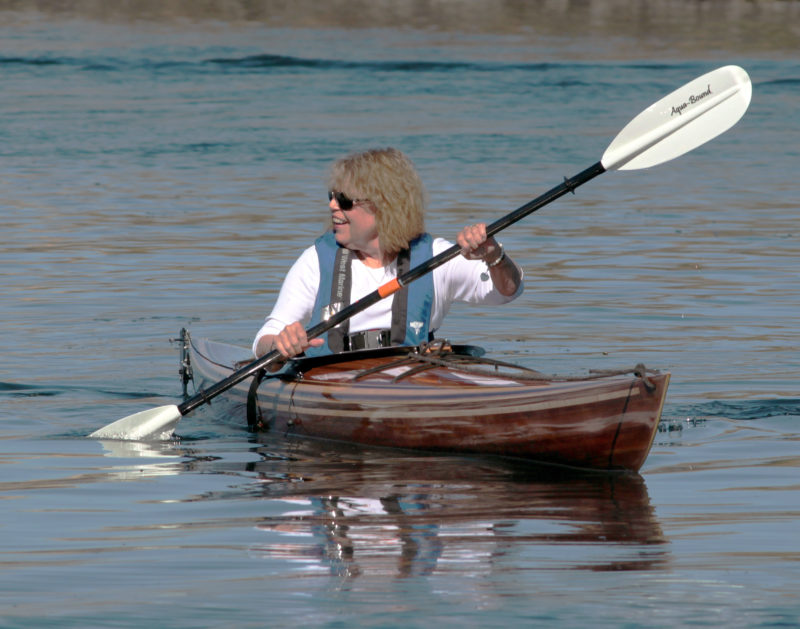 Photographs courtesy of Dan Newland
Photographs courtesy of Dan NewlandThis kayak, the first of the two kayaks that Dan designed and built, was for his wife, Linda. It is the same design as CELESTE.
In recent years, Dan has returned to models and small boats. He builds and sails 37″-long T37 radio-controlled racing sloops and has built two cedar-strip sea kayaks. Dan had no experience with kayaks, so he drew upon Steve Killing’s Endeavour design when drawing up the hull. The first kayak he built was for his wife, Linda, using western red cedar, bird’s-eye maple, sapele, and Alaska yellow cedar.
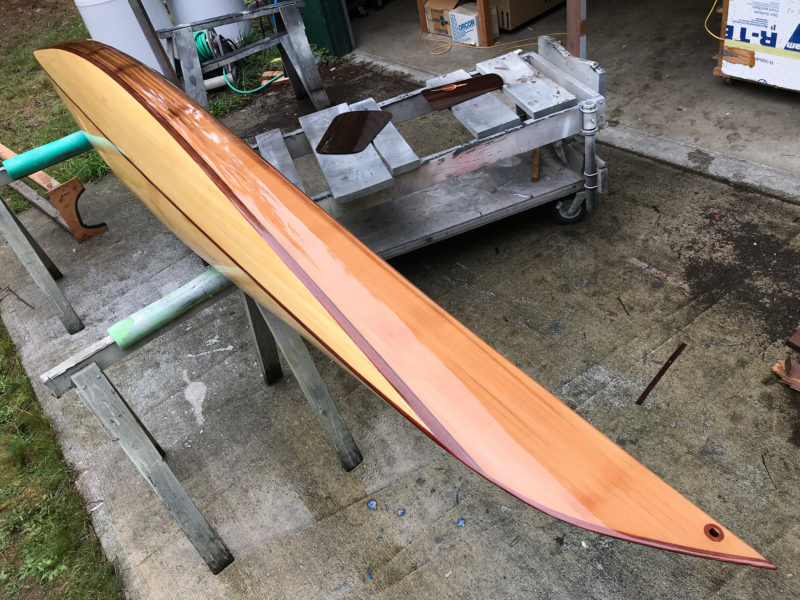
CELESTE’s hull has a yellow cedar bottom and topsides of figured red cedar. Accents of padauk, rosewood, and sapele grace the stem, waterline and centerline. The hole in the bow is ringed with Bolivian rosewood.
The second kayak, CELESTE, is the one here, built mainly of red and yellow cedar, with some sapele and a dozen other different hardwoods for color and decorative touches. Dan has been drawing, painting, and sculpting for the better part of his life and has an artist’s eye. He recalls, “I got to thinking that wood could be an interesting medium for art. Bright-finished wood has the gift of nature’s artistry that you get to combine with your own imagination and skill.
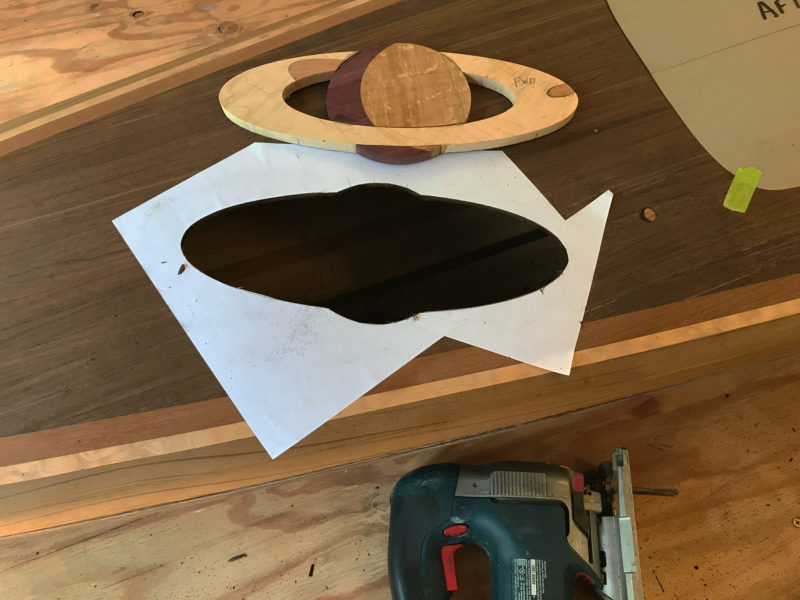
The rings of the Saturn-like planet will have shadows cast on its rings, as does the moon that has already been inlaid on the deck.
Many woods are beautiful when varnished, but I realized that with a turn of the grain, a dark swirl or a knot, or unexpected color, this could be a palette that you selected to tell a story. I woke one morning and saw Saturn lying on the deck of the kayak. It hit me that the natural colors and swirls of grain of many different woods are reminiscent of the clouds and atmosphere of exoplanets.” He ran with that idea and embellished the deck with planets, moons, and a comet. One moon, with a diameter of just 3/32″, has a tiny knot for a crater.
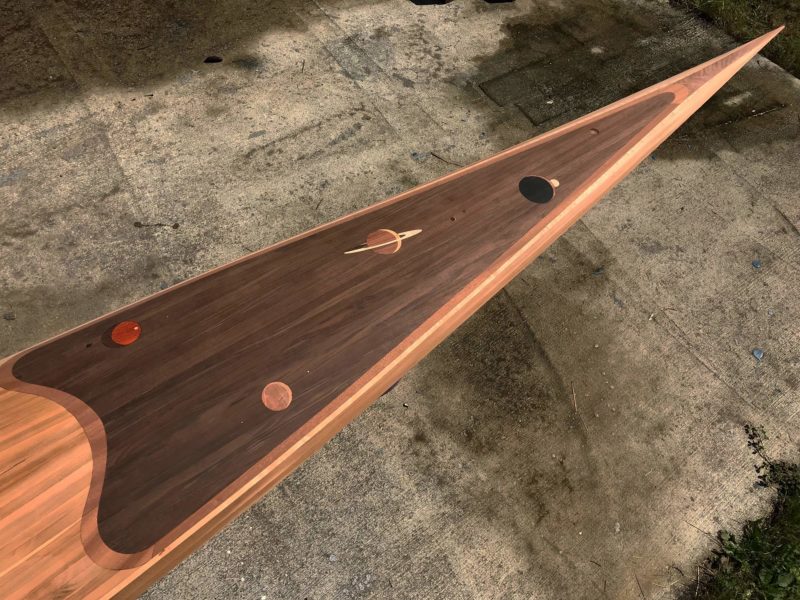
The planets on the foredeck appear to float on the darkness of outer space, which Dan created with strips of Peruvian walnut. The contrast and color will be much more dramatic after the finish is applied.
Dan spent 550 hours building CELESTE, and that includes having to remove the deck’s ’glass-and-epoxy sheathing and five sprayed-on layers of clear topcoat. Dan noticed tiny white streaks where the epoxy had not fully saturated the ’glass cloth. They were almost imperceptible but were a flaw he wasn’t willing to live with. He redid the ’glass with an epoxy with a slow hardener, which continued flowing long enough to completely fill the weave. The experience proved his maxim: “All mistakes in boatbuilding are ultimately taken out with sandpaper.”
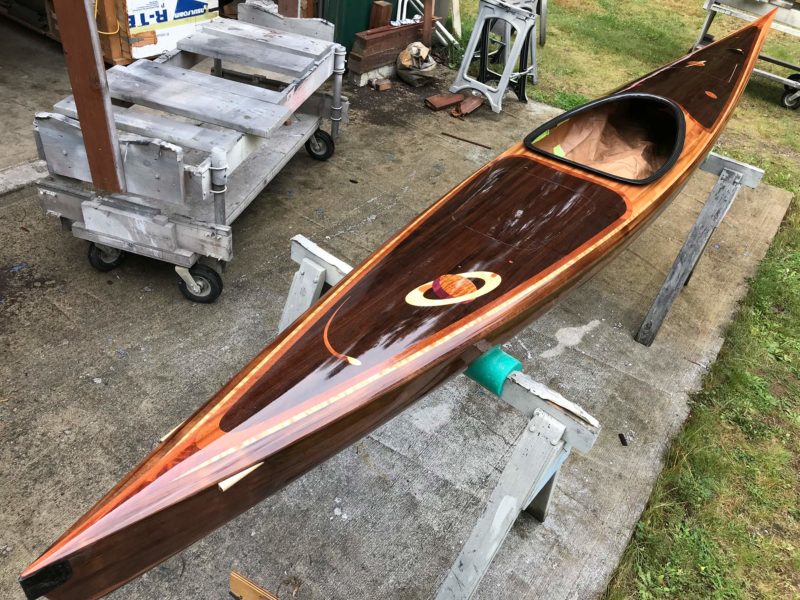
The afterdeck
CELESTE reflects the high standards Dan has held for his work and is one more reason to assure himself that he hasn’t wasted a bit of his life since he turned six.![]()
Do you have a boat with an interesting story? Please email us. We’d like to hear about it and share it with other Small Boats Magazine readers.
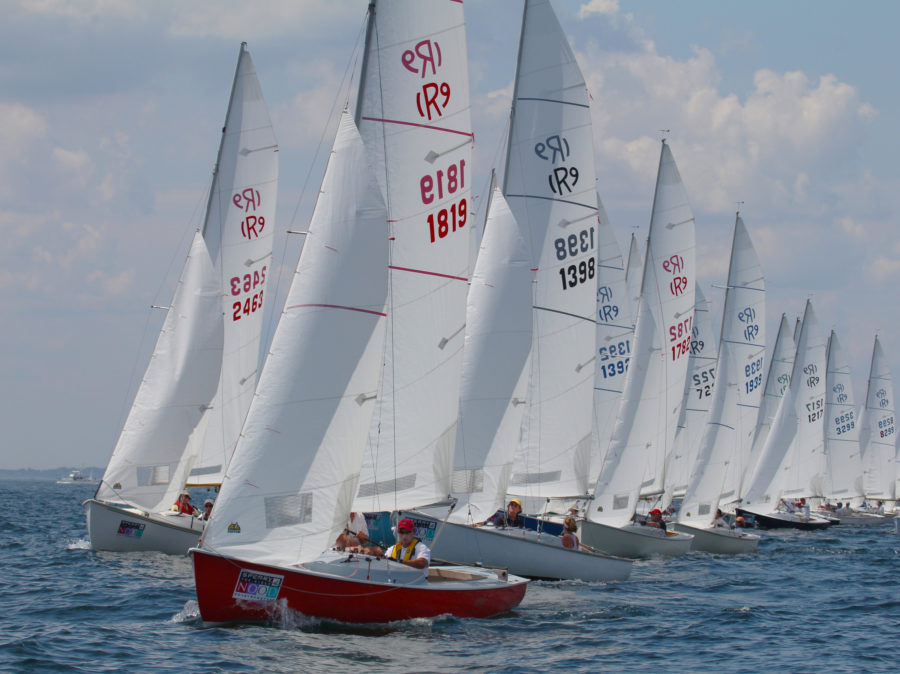
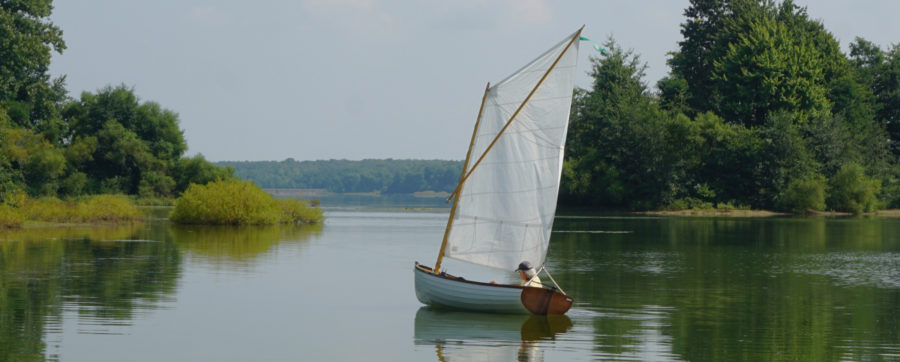
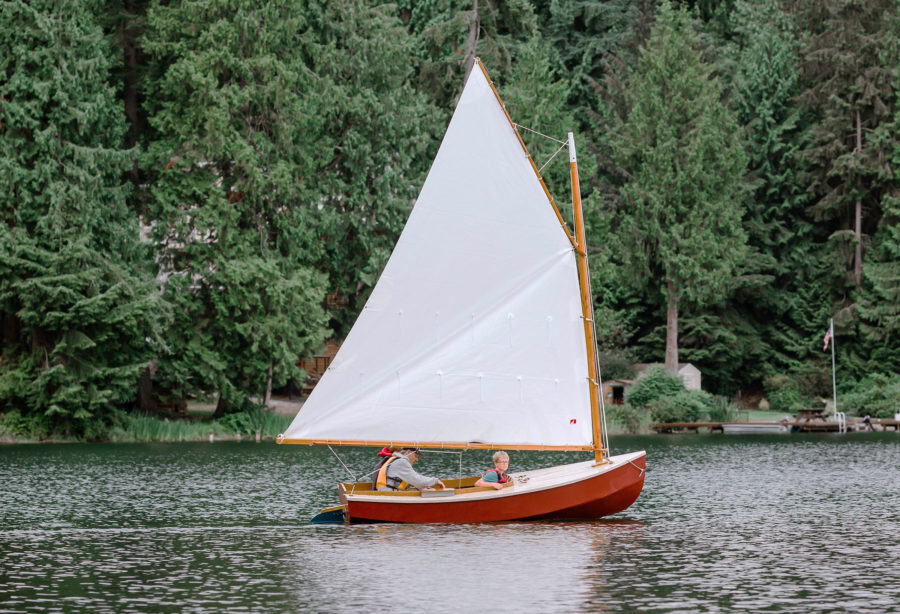
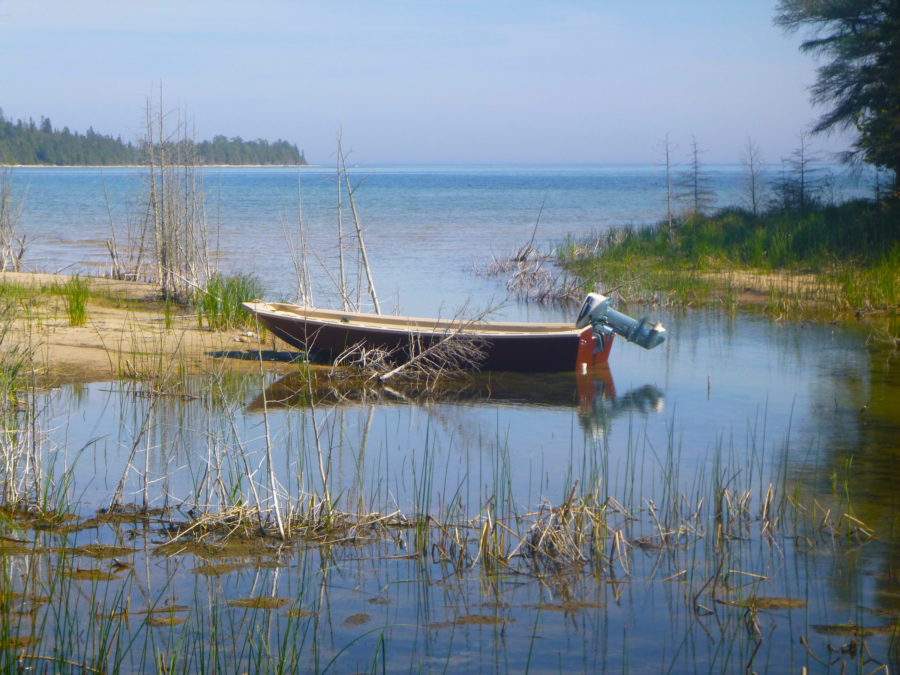
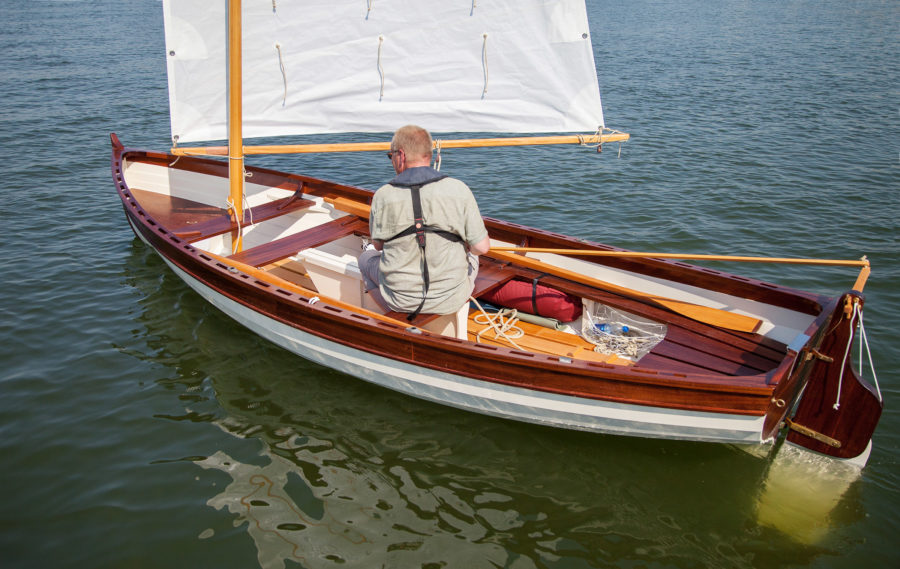
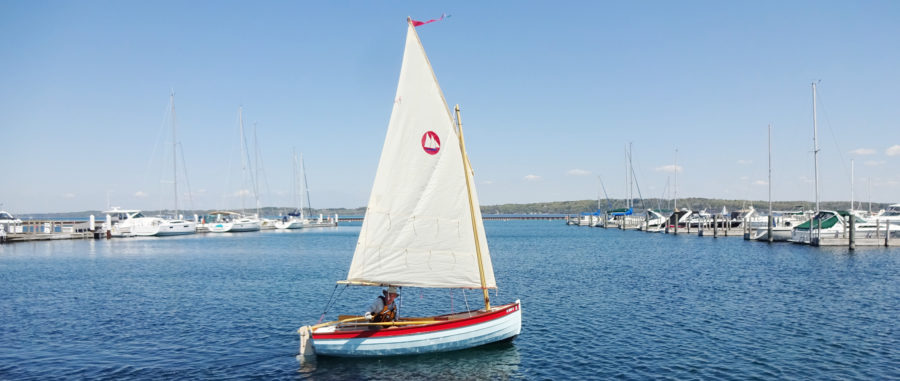
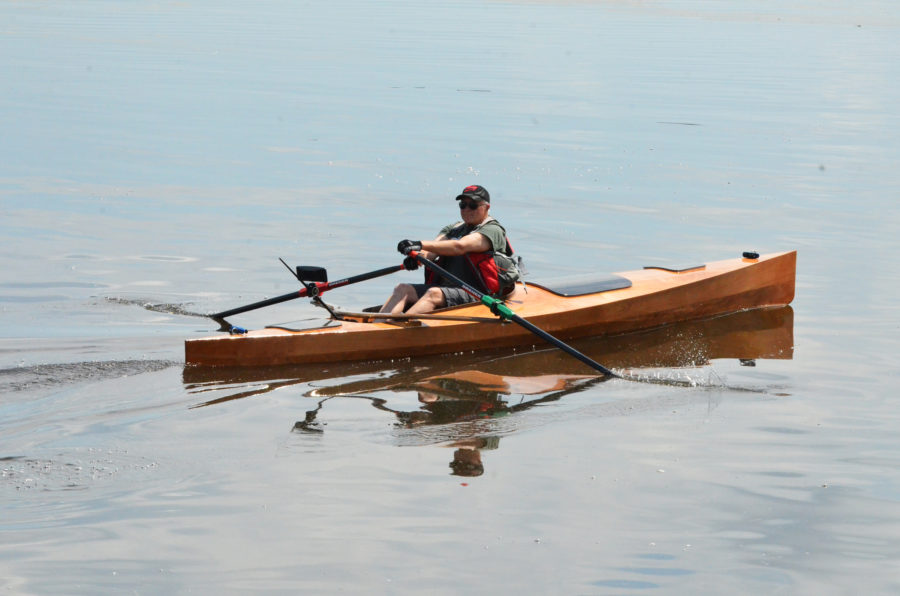
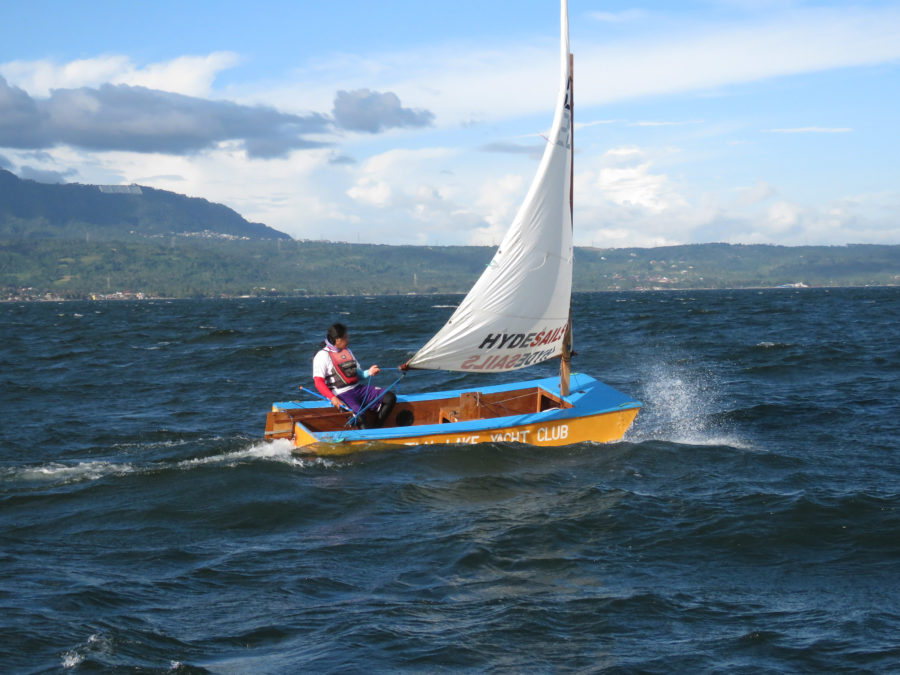
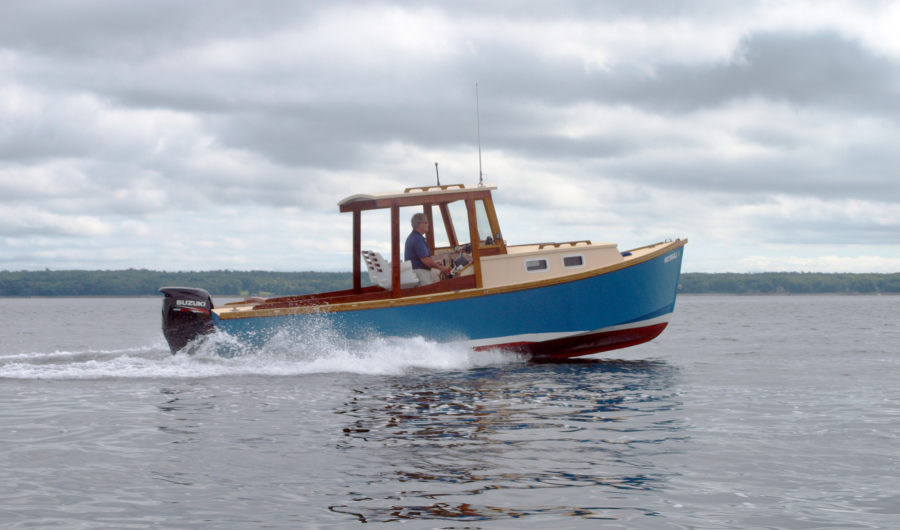
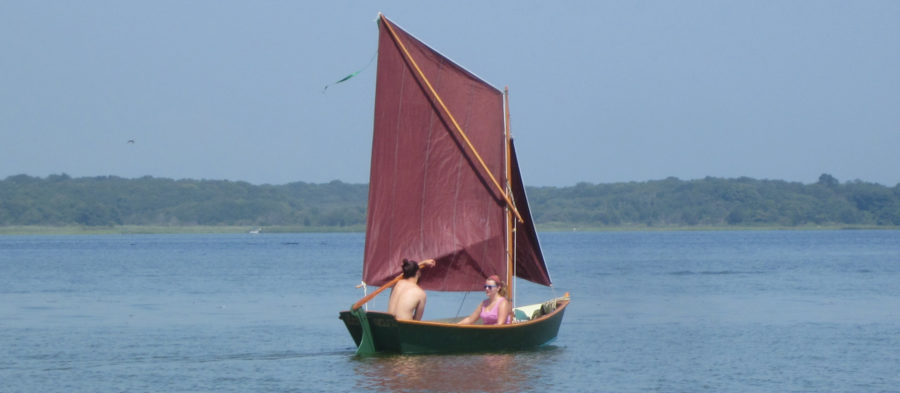
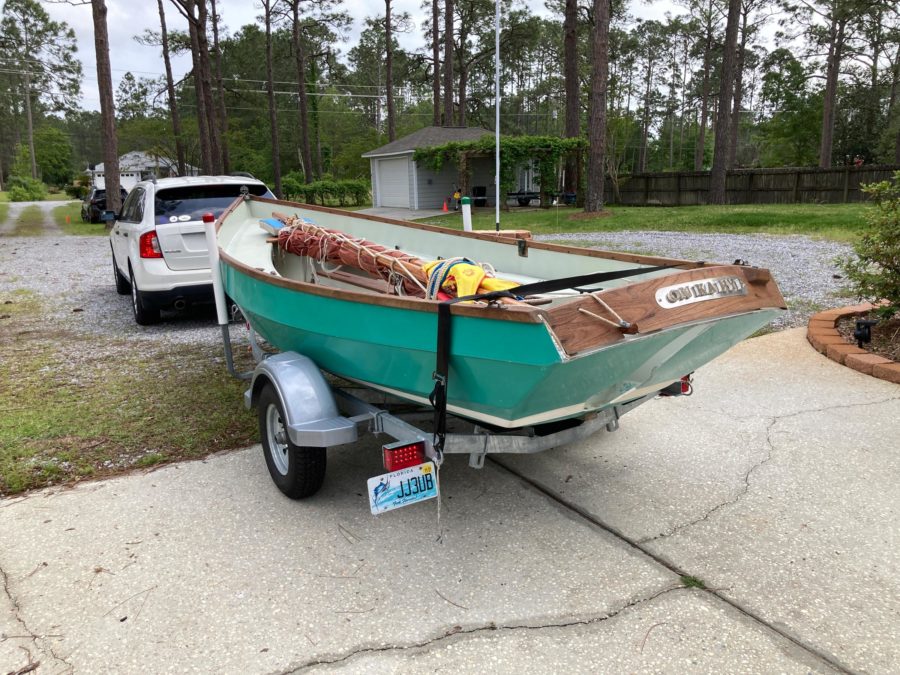
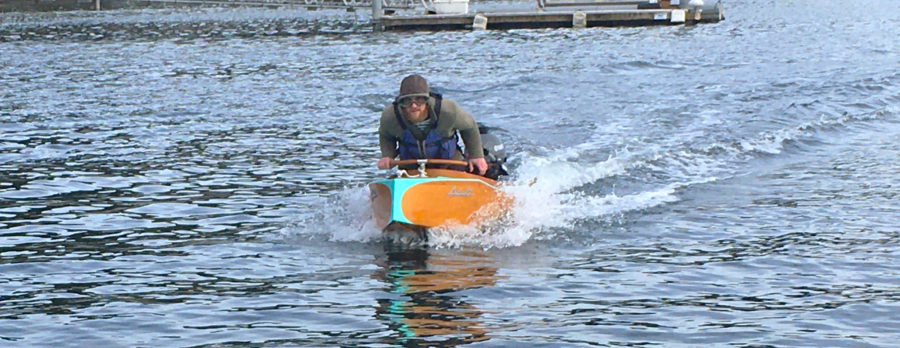
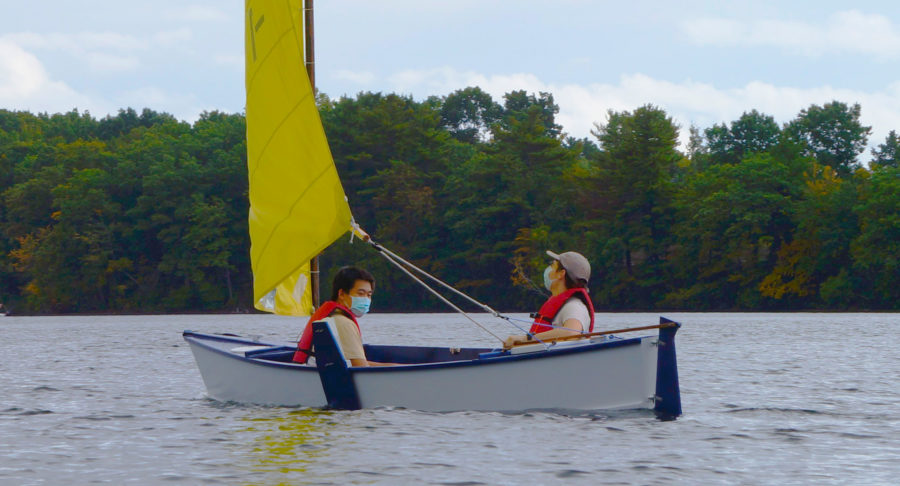
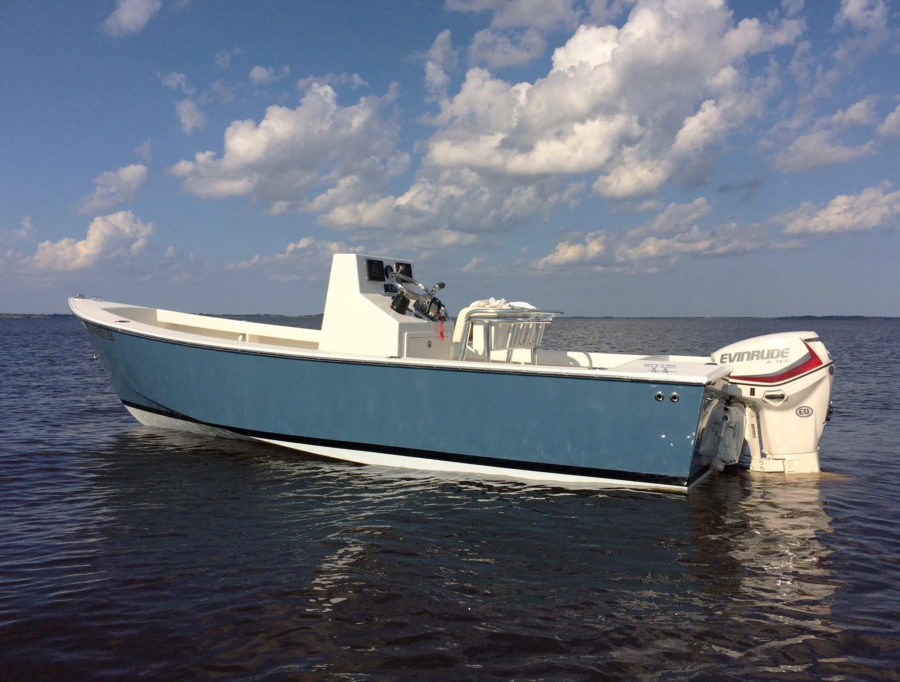
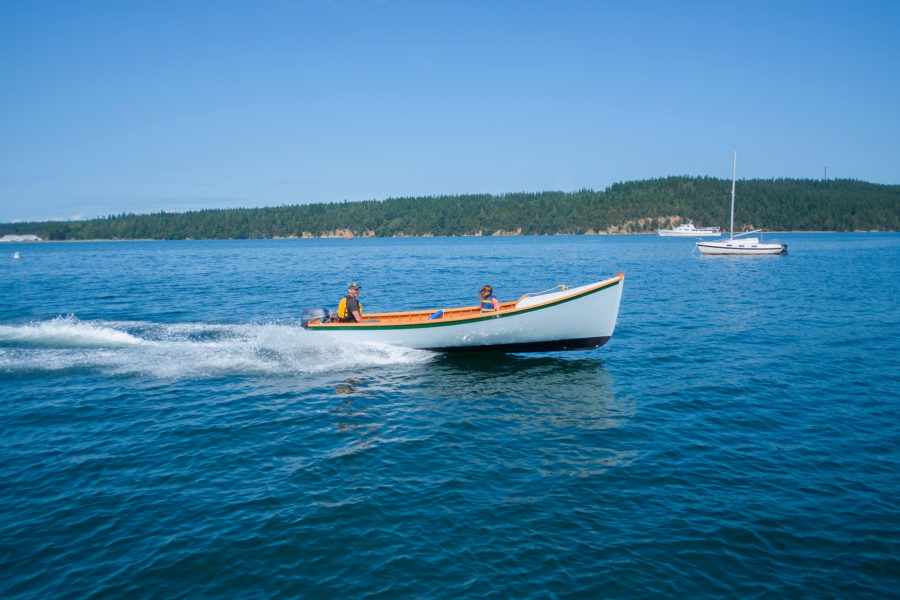
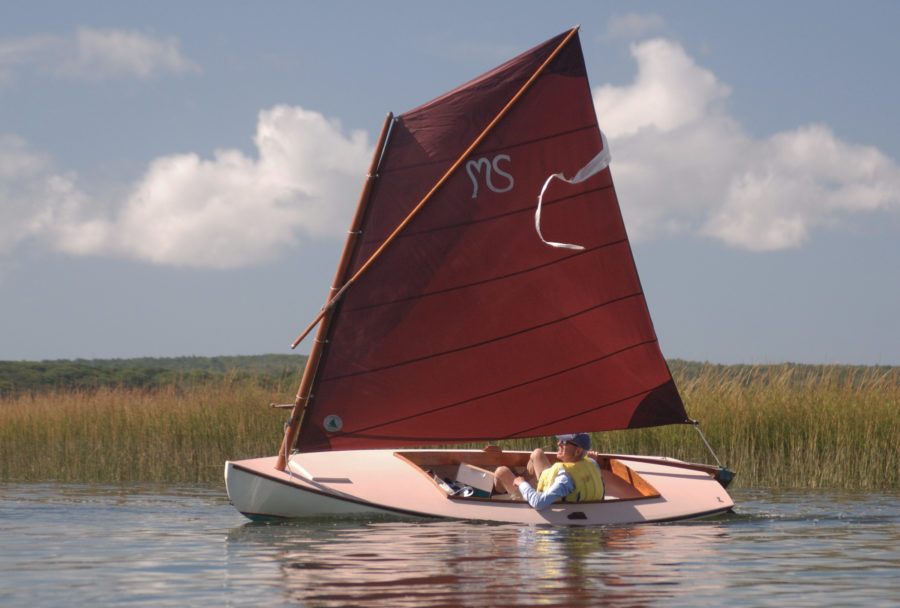
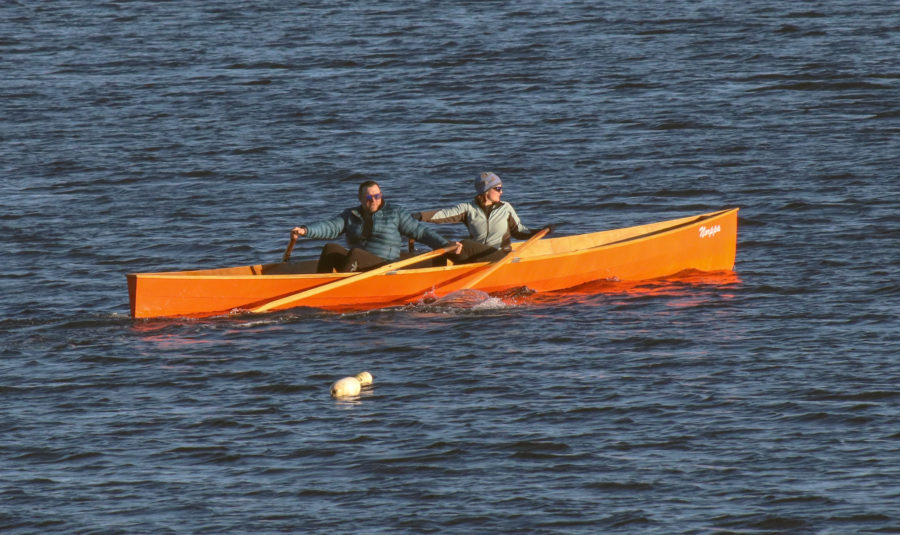
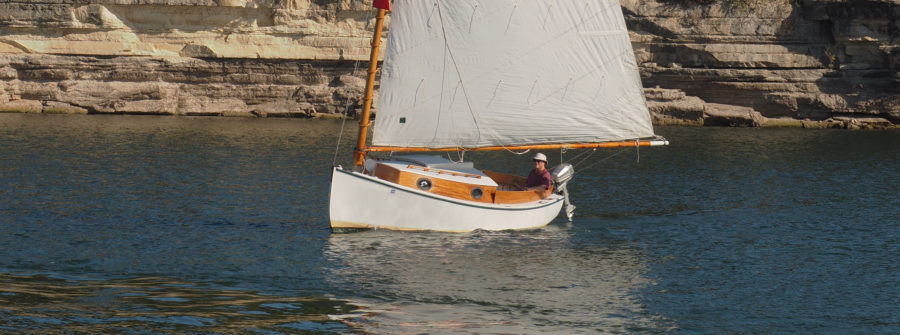
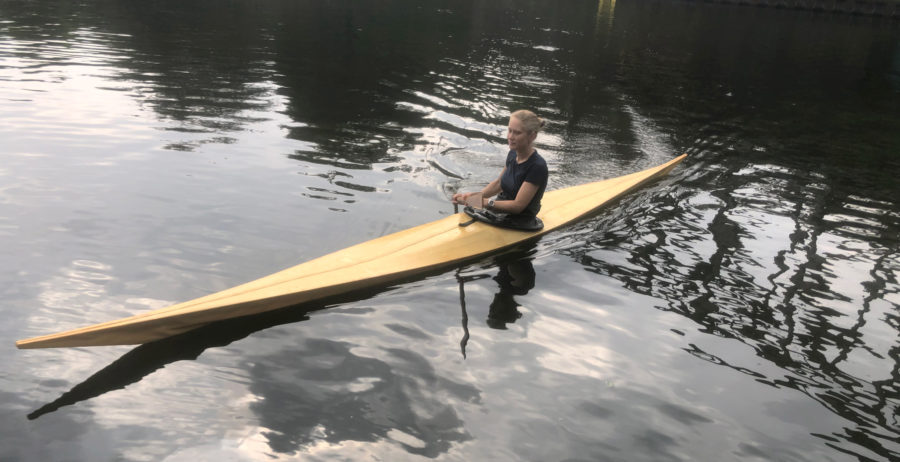
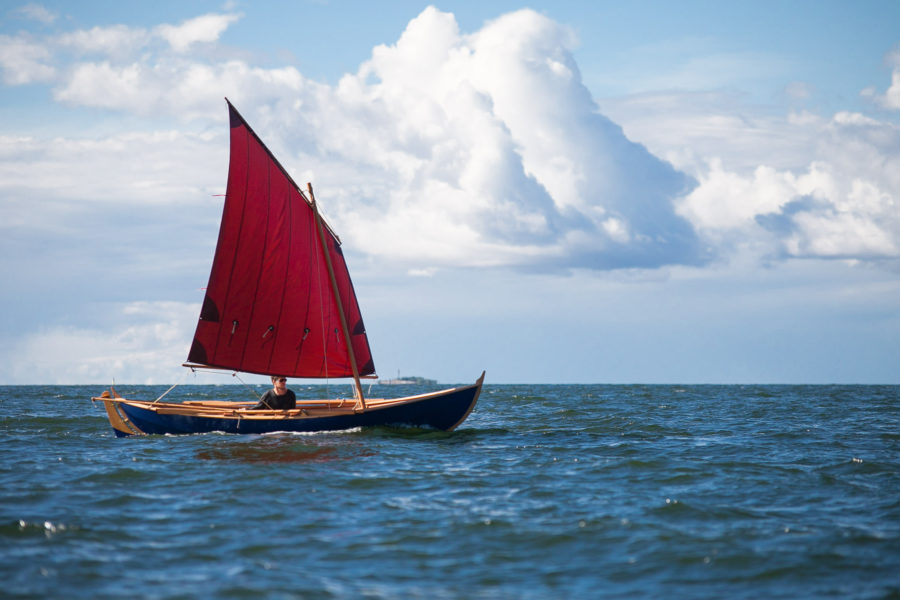
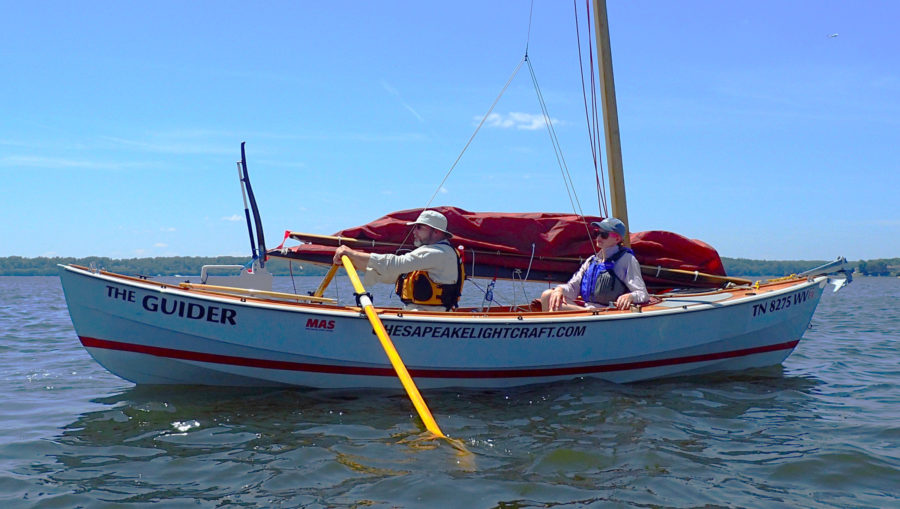
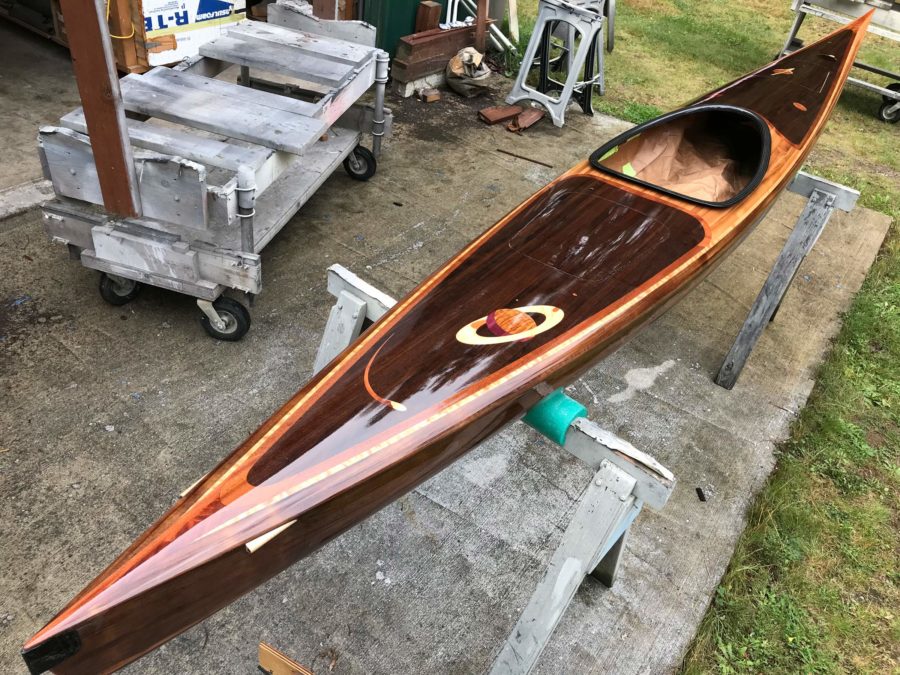
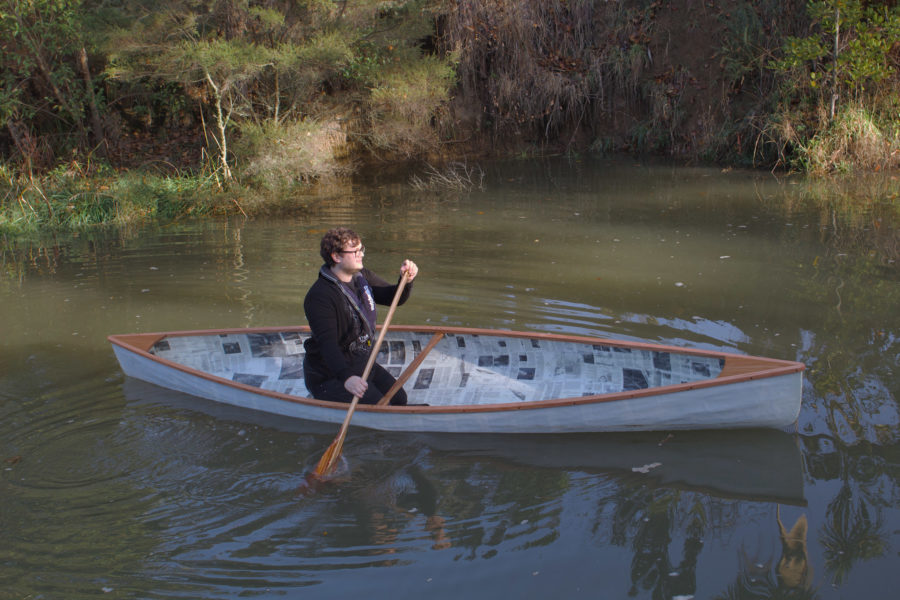
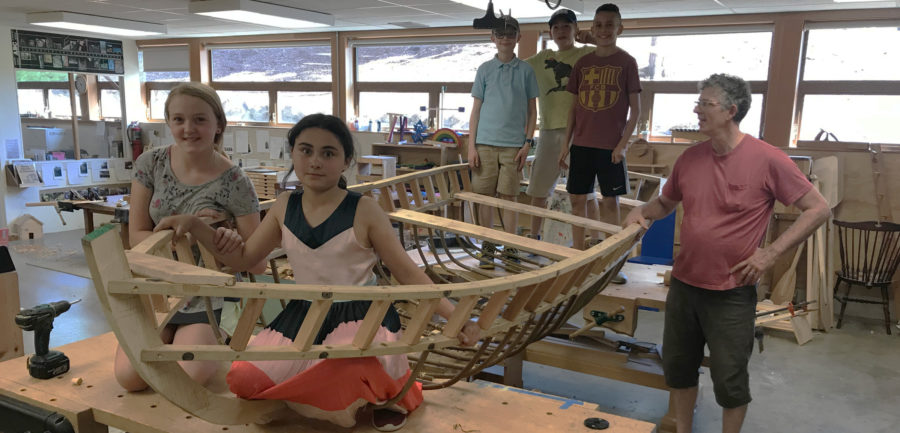
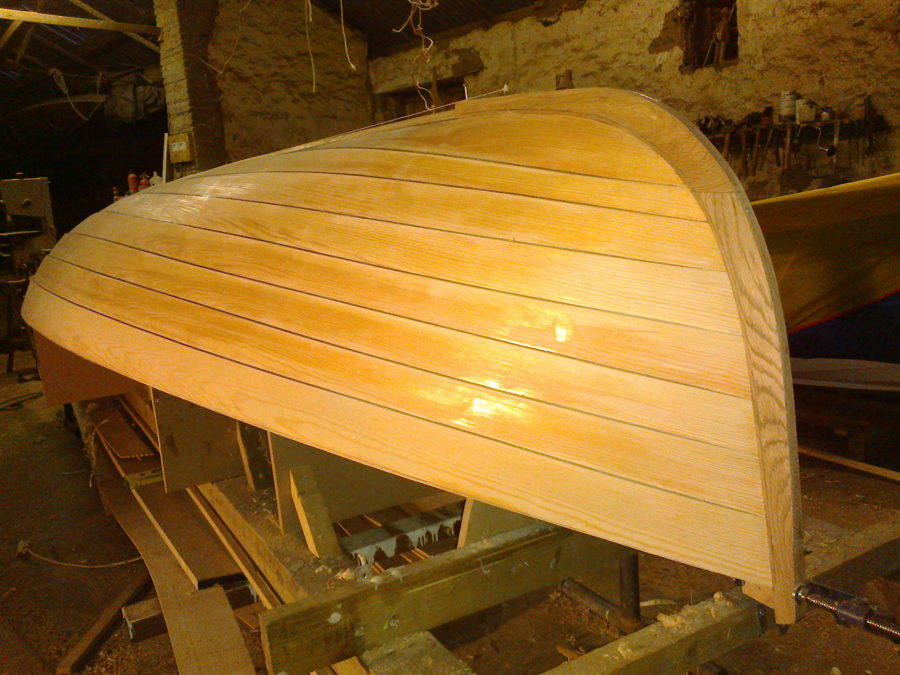
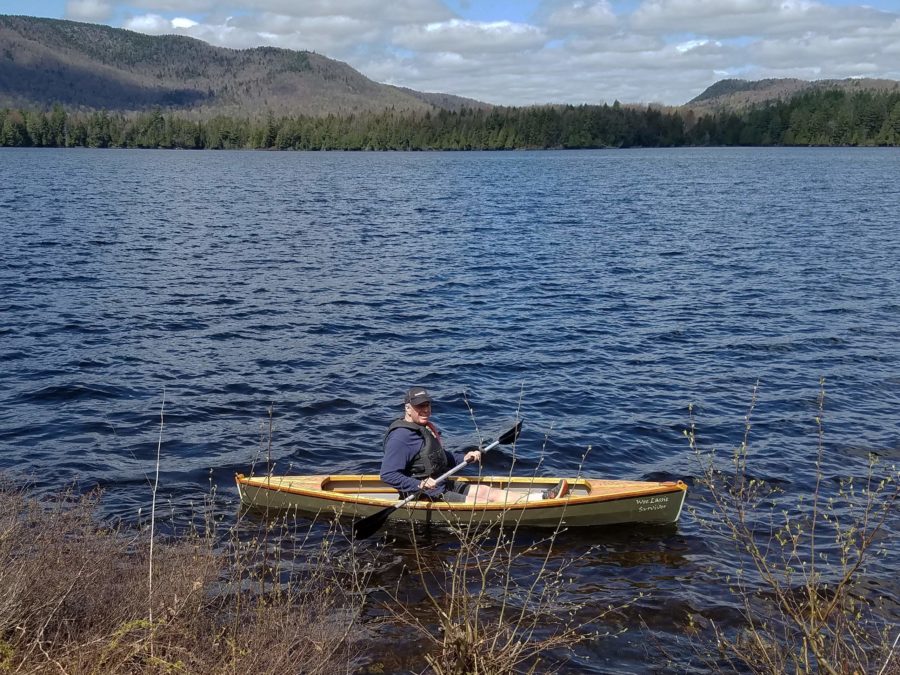
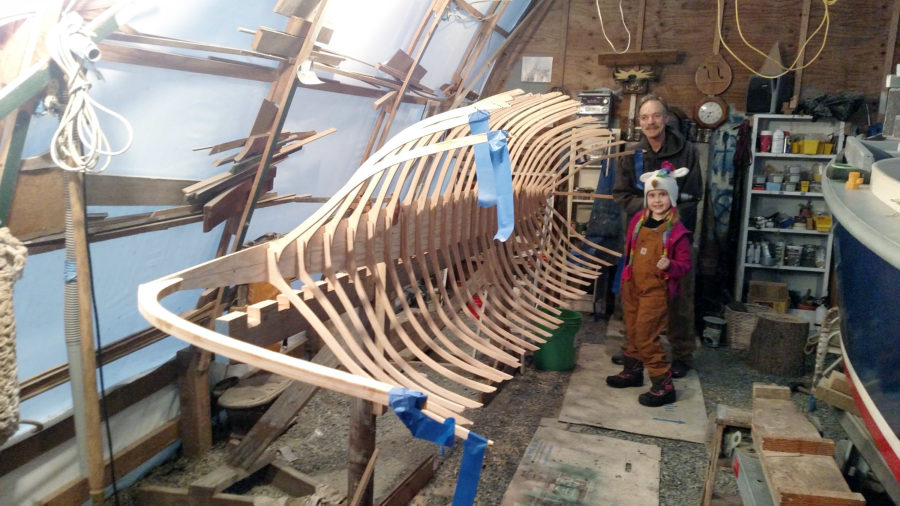
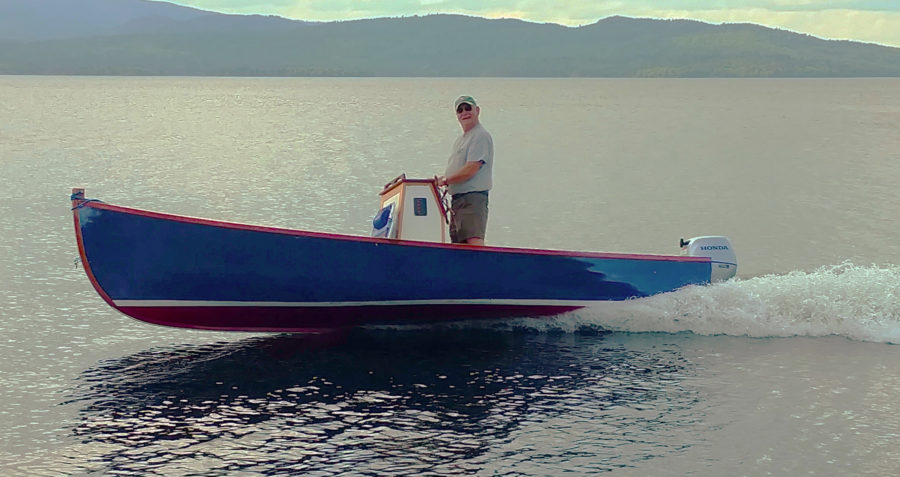
I am amazed and appreciative of all of Steve’s talent and achievements. Not only has he not wasted any of his life, he has accomplished enough for two lives.
The brightwork is stunning. What a wonderful story. Great reminder of why children should be encouraged to dream. And by bringing dreams to fruition, they develop the sense of reward brought by hard work and attention to detail.
Congratulations, Dan, on all of your accomplishments.